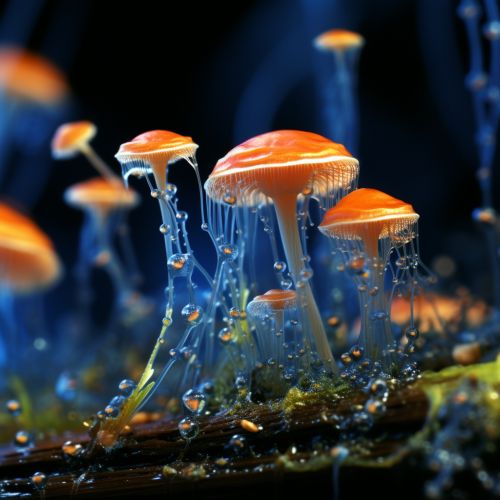Sensory Mechanisms of Food Detection in Fungi
Introduction
Fungi, a diverse group of eukaryotic organisms, have developed a myriad of mechanisms to detect and respond to their environment. One of the most critical aspects of their survival is the ability to detect food sources. Fungi primarily feed on organic matter, and their sensory mechanisms have evolved to efficiently locate and utilize these resources. This article explores the sensory mechanisms of food detection in fungi, delving into the biochemical, cellular, and genetic aspects of these processes.
Biochemical Mechanisms
Fungi employ a variety of biochemical mechanisms to detect food. These mechanisms are largely based on the detection of chemical signals in the environment that indicate the presence of potential food sources.
Chemotropism
Chemotropism is a common mechanism used by fungi to detect food. This process involves the movement of fungal cells or hyphae towards a chemical stimulus, usually a nutrient source. This movement is facilitated by the differential growth of the fungal cells or hyphae, which is influenced by the gradient of the chemical stimulus. This process is particularly important in the initial stages of food detection, allowing the fungus to move towards potential food sources.


Quorum Sensing
Quorum sensing is another biochemical mechanism employed by fungi to detect food. This process involves the production and detection of signaling molecules called autoinducers. When the concentration of these molecules reaches a certain threshold, it triggers a response in the fungal cells, often leading to changes in gene expression that facilitate the utilization of the detected food source.
Cellular Mechanisms
Fungi also employ cellular mechanisms to detect food. These mechanisms involve the use of specialized cells and structures that are capable of sensing environmental cues related to food.
Hyphal Tips
The tips of fungal hyphae play a crucial role in food detection. These structures are highly sensitive to environmental cues, including those related to food. They are capable of sensing changes in nutrient concentrations, pH, temperature, and other factors that may indicate the presence of food. This information is then relayed to the rest of the fungal organism, triggering appropriate responses.
Spore Germination
Spore germination is another cellular mechanism involved in food detection. Fungal spores are typically dormant structures that become active when conditions are favorable, including the presence of food. The germination process involves the sensing of environmental cues, including nutrient availability, which triggers the activation of the spore and the growth of a new fungal organism.
Genetic Mechanisms
The ability of fungi to detect food is also influenced by their genetic makeup. Certain genes are known to play a crucial role in this process, influencing the biochemical and cellular mechanisms involved in food detection.
Nutrient Sensing Genes
Fungi possess a variety of genes that are involved in nutrient sensing. These genes encode proteins that are capable of detecting specific nutrients in the environment. When these nutrients are detected, it triggers a cascade of events that ultimately leads to the utilization of the detected food source.
Signal Transduction Genes
Signal transduction genes also play a crucial role in food detection. These genes encode proteins that are involved in the transmission of signals from the environment to the fungal cells. This process is crucial for the interpretation of environmental cues, including those related to food, and the triggering of appropriate responses.
Conclusion
The sensory mechanisms of food detection in fungi are complex and multifaceted, involving a combination of biochemical, cellular, and genetic processes. These mechanisms allow fungi to efficiently locate and utilize food sources, ensuring their survival in a wide range of environments.
